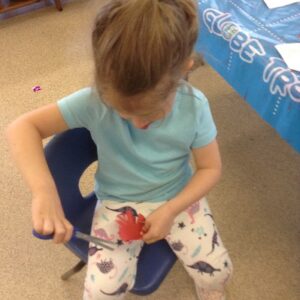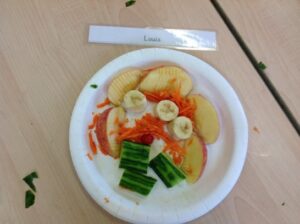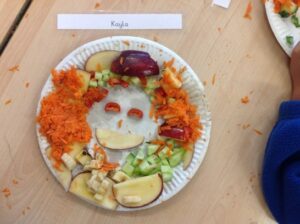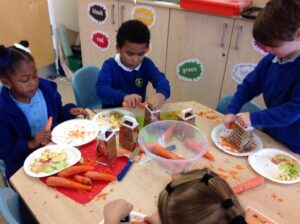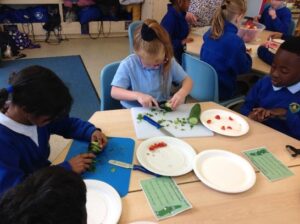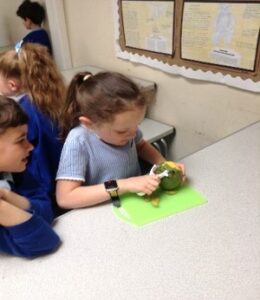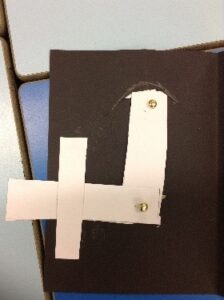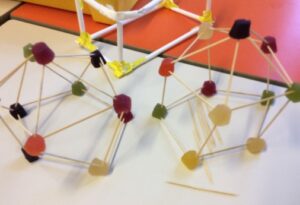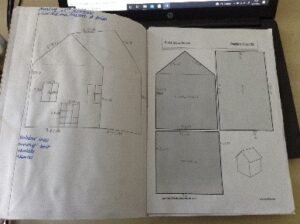Subject Lead: Mrs P Hitch
- Design and Technology at The Ryde School (234.25KB)
- Design and Technology Curriculum Milestones (137.73KB)
Design and Technology Curriculum 2023-2024
- Design and Technology Curriculum Map (208.97KB)
Exploring Design and Technology at The Ryde School
Nursery
Design and Technology is about making something for somebody for a purpose. In Early Years, much of the time spent on design and technology is spent exploring and combining different materials. In doing this, children learn about the properties of materials and how to use them to solve problems. As their projects progress, children experience success and failure, which helps them to build resilience. As they have ideas, children need to find creative ways to fulfil them.
Reception
Reception children have been practising their joining techniques.

Reception Class read the story Lost and Found together. They built and tested boats using wooden blocks, foil, string and weights.
Continuous provision in Reception Class.
Children in Reception have had lots of fun with food this year. After reading ‘Handa’s Surprise’ the children made fruit sticks. They made a banana split for the campfire during Outdoor and Adventurous Week.
Solar System
Reception Class have been exploring different joining techniques.
While making a solar system the children learnt how to punch holes and join using treasury tags.
Year 1
Freestanding Structures: 3-D Houses
The children have been learning about Traditional Tales in their English lessons and so decided to build a 3-D house for the Three Little Pigs. The class were visited by Graham Randall, an architect, who came in to discuss how to create a house plan. The children learnt how to secure two materials together, choose appropriate materials and design to a brief.
Design and Technology – Food
Autumn 2023
Our Design and Technology learning this term has focused on eating more fruit and vegetables.
We have learnt to identify and describe some familiar fruits and vegetables, using vocabulary like skin, flesh and seeds. We also gathered data on the most popular fruits and vegetables in Year One.
We prepared the fruits and vegetables hygienically, working safely with sharp tools such as knives and graters. We enjoyed preparing our fruit and vegetables and made a face using them before eating!
The children have thoroughly enjoyed their learning about healthy food this term. Here are the skills they have been learning:
- To safely cut, peel and grate
- To weigh using electric measuring scales
- To design a recipe
- To assemble ingredients
and made a healthy snack – a yummy fruit kebab – using their new Design and Technology skills.
Axels
Year 1 have been learning how axels work. They used a cardboard box to make a vehicle with a frame to attach our axels to. Then they added wheels and were able to make the vehicles move.
Suitability of materials
Year 1 tested different materials to discover which would be best to make a pair of wellies. They considered how to make it a fair test and identified that it needed to be waterproof and strong.

Year 2
Food and Nutrition: Seaside Snacks
The children enjoyed this unit trying different fruits and vegetables. They enjoyed the opportunity to look at different recipes rather than just focusing on one and exploring how products had been created. The children were able to measure ingredients using cups and electronic scales. They cut, peeled and grated ingredients assembling them independently, safely and hygienically.
Structures and Movement – Windmills
Year 2 have been developing their Design and Technology skills by …
Cutting materials safely using various tools
Creating products using levers, wheels and winding mechanisms
Designing products that have a clear purpose and an intended user
Exploring how products have been created
Demonstrating a range of joining techniques
Then the children were tasked with designing and making a windmill. When the designs were ready, grown-ups from home were invited to school to help make the models. The children all understood the need for their model to be strong, stiff and stable. Everyone was very happy with their final moving structure.
Structures around the world
They have been learning about structures around the world and how to make a strong, stiff and stable structure themselves. Children designed their own structure, a bridge. They practised drilling, screwing, gluing and nailing materials to strengthen products and enjoyed testing their bridge.
Sewing
They have enhanced their sewing skills whilst making a puppet as a final product. The children independently sewed on buttons and completed a running stitch to hold two pieces of fabric together.
Cutting skills
They have designed and made a healthy dish – a fruit kebab. The children learnt how to cut, peel, grate, measure and weigh ingredients safely and hygienically.
Year 3
Textiles: 2-D Shape to 3-D Product
The children have been using their investigative skills to understand how pencil cases are made and learning which materials and joins are best to use. The children went on to design, make and evaluate their own pencil case, adapting their design where necessary. The children selected the tools to use and cut, joined and finished with increased accuracy to make a functional product.
Healthy Snacks
They have been learning about healthy food choices by taste testing a variety of breads and sandwich fillings. They then designed their own healthy sandwich thinking carefully about making healthy choices and which ingredients would go well together. The children wrote a set of instructions, including the equipment they would need to make their sandwich safely and hygienically. The children then made and evaluated their final product, thinking about changes they could make if they made another snack. Year 3 all agree their healthy snacks were very tasty!
Mechanical Systems – Levers and Linkages
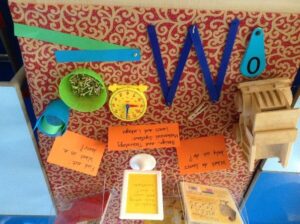
The children practised making lever systems. They then designed a card with a pop-up element.
Here are Year 3’s final product. An object flying over the earth moved by a lever mechanism.
Food
They really enjoyed tasting different types of bread and fillings, some for the first time. The children drew ‘exploded sandwiches’ to show a new design for a healthy sandwich, sketching different flavours and textures of foods. After making and trying their sandwich, the children then evaluated their product.
Textiles
They have evaluated different types of pencil case so they could design their own. The children designed a case using felt with sewing to join pieces together and attach a button as a fastener. The children practised a running, over sew and blanket stitch. Finally, they choose appropriate joining techniques for the decorations they chose.
Year 4
- Class 4 have been learning about the Anglo-Saxons in History and linked this to their DT food topic by creating different food items the Anglo-Saxons would have made. They learnt why each ingredient was used and how some ingredients used commonly today were not, such as sugar.
- The children enjoyed following recipes and cooking, tasting their food and evaluating it. Class 4 invited their parents to school for a parent activity making Anglo-Saxon bread.
They have been exploring different packaging and learning about nets. They practised making various 3D shapes from a net and deconstructing a 3D shape to understand how it is formed from a net. The children then used this knowledge to make a sarcophagus from a net they had designed.
Year 5
Frame Structures
First the children experimented with frame structures – a paper investigation building on triangulation.
Then they investigated weight bearing structures – investigating whether a structure could support more weight than its individual components.
Finally the children tested weights and designs to build their knowledge and ideas.
Understanding structures
Year 5 worked on their understanding of structures; they made different structures from straws and tape, Lego and rolled up newspapers. They looked at how to make a structure secure and stable. After lots of practise with the cutting and joining skills, they made an insect hotel.

Sewing
What can you make using design and technology skills?
Display to accompany our sewing unit.

The pupils used their sewing skills to make a square for a class quilt.

British food
Year 5 have looked at British foods. They did lots of taste testing, looking at the nutritional information of different dishes as well as cooking Scottish shortbread and crumble using seasonal fruit.

Year 6
Food technology and structures
The children in Year 6 were very excited by this Design and Technology unit – to make a Gingerbread House. They designed their houses using cross-sectional diagrams, made prototypes, measuring accurately and calculated ratios of ingredients to scale up a recipe.
The children then demonstrated a range of baking and cooking techniques, finally, ensuring their product had a high quality finish using their artist skills.
The children learnt to continually make refinements to their design, prototype and finished product.
Some children were able to share the final stage of this unit with an adult from home – this was a great way to finish the unit. The children were supported to build and ‘glue’ together their biscuits to create their structures.
Reports back were that the gingerbread houses were very tasty too!







